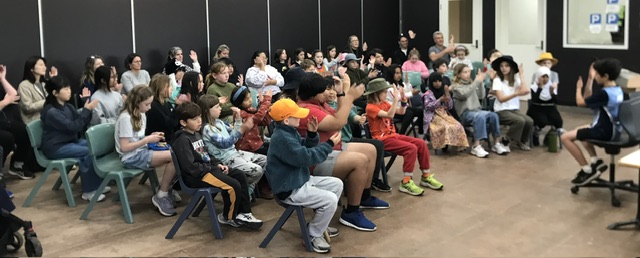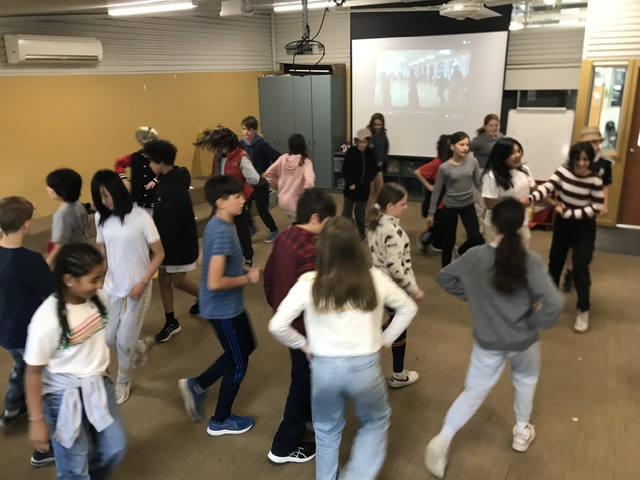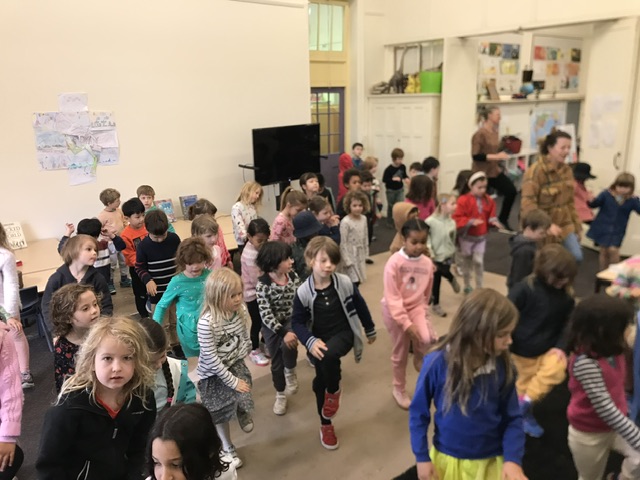Hi everyone! Well, if the above quote makes you think of music, as you drool, you are well on the way to unravelling the mysteries of the treble stave: BRAVO! In the past couple of weeks Yr12 Ngh1 has been striding into basic music theory as a way of getting a head start, or a helping hand, with instrumental learning… fascinatingly, our curiosity has taken us back in time. Our IM students are working hard towards their final performances, some Neighbourhoods have exceeded the Nutbush speed limit, and the Yr 6s have locked in their Graduation Song. It’s all busy and exciting, and I’m delighted with what’s being achieved. Fabulously exciting too, was the first rehearsal of our Parent Student choir: an inspired ‘dream come true’ of Emily Hayes our choir director. Please read on for more news…

What I love about introducing basic music literacy to Year 12s is that so many students are eager to explain what they have learnt in their own musical adventures, or share with the Home Group what they have seen and heard their older siblings practising. Each Home Group is moving in the directions which build on the emerging knowledge of the students. In some groups we are learning how the 5 line stave works: that’s where Every Good Burger Deserves Fries comes in as EGBDF are the names of the lines of the treble stave. In other groups we are focusing on note values. We all understand that there are symbols which represent the way we sound language, the alphabet for example, and that we have ways of organising these symbols into words, phrases and sentences. Like our visual code for language, we have one for music. Music notation has a fascinating history, and the Year 12s are full of questions. After only 2 lessons, Year 12E sight sang this example.

There is a lot of information in this short example. We know it will sound medium high, how long each note will be, what each pitch will be, how many beats are in each bar and that bars divide the music for visual and rhythmic clarity, and that we get to sing this piece twice.
Music notation dates back thousands of years. The origins of Western music notation, as we know it today, evolved in the 7th Century with square shaped notes called neumes, all drifting around above text to indicate a contour of the melody. By the year 1000, music looked like this…

Folk back in the day, had some rules and understandings about how to interpret this score, but some vital information was missing, like the precise pitch and duration of each note, so the interpretation of the fragment above would vary depending on the performer. Three hundred years later, a brilliant musician Guido D’arezzo, had the bright idea to arrange these symbols on a stave of four lines, where each line and space was a position specific to a pitch. By the 1300s, there were now five, and even six, line staves, and all kinds of square, diamond and triangular note heads to indicate duration.

As instrumental music over took the dominance of vocal music, the evolution of music notation settled into the notation conventions that we recognise today. Music notation is still evolving, and contemporary composers often find that this basically 17th Century way of representing sound is too restrictive… but this is a whole other and very wild chapter! It is all a fantastic exploration, and a liberating concept to imagine that we can dream up our own code for representing sound, as well as borrow some conventional ideas too. Bravo Yr 12s, let’s go there!
It’s been huge fun to have dancing as a main music focus, and I am excited to see everyone dance the Nutbush in assembly this week. The 4/5Ngh challenged themselves by dancing the moves at 1.5 speed which was a riot, and achievable if you kept your steps small, and the Preps ‘Funky One-Step’ version has been a great introduction to the dance. Here is a crazy super challenge idea: can anyone dance the Nutbush while adding the Macarena arm moves 🤪? I am also super impressed by the Yr 5s from the 5/6 Ngh who have the Gay Gordon Dance purring along. They are looking forward to introducing this dance and I hope that it will catch on. It’s a fabulous way to build community as your partners are always changing, and I dream of a whole School Gay Gordon in a massive circle around the gym… one day!


The IM students are looking forward to their final performances next Friday November 3rd. Please do join us for their Assembly at 3pm and the evening Concert at 7pm. The final IM events in the year are always special as we celebrate the achievements of our Yr 6 IM students, many of whom have been in the IM program for 5 years, and introduce to the stage our budding Yr 2 IM beginners for this year. Stepping out on stage for the first time, with the support of your IM lesson buddies, is a great accomplishment that comes with excitement and, maybe, a couple of butterflies in their tummies too.
Our wonderful Parent/student Choir had their first rehearsal this week, and what a beautiful warm sound the parents singing voices have: it’s like we gained a lower octave with an extra hug! We are so happy to have our parents join us to prepare a special set of songs to perform at the School Bazaar, and it will be epic to have exclusive rehearsals with the Teeny Tiny Stevies who will teach us one of their songs. Bravo to Emily for this fabulous idea, and thank you for making this happen. Thanks, as ever, to everyone for a lovely couple of weeks of dance and music making. All the best, Deb